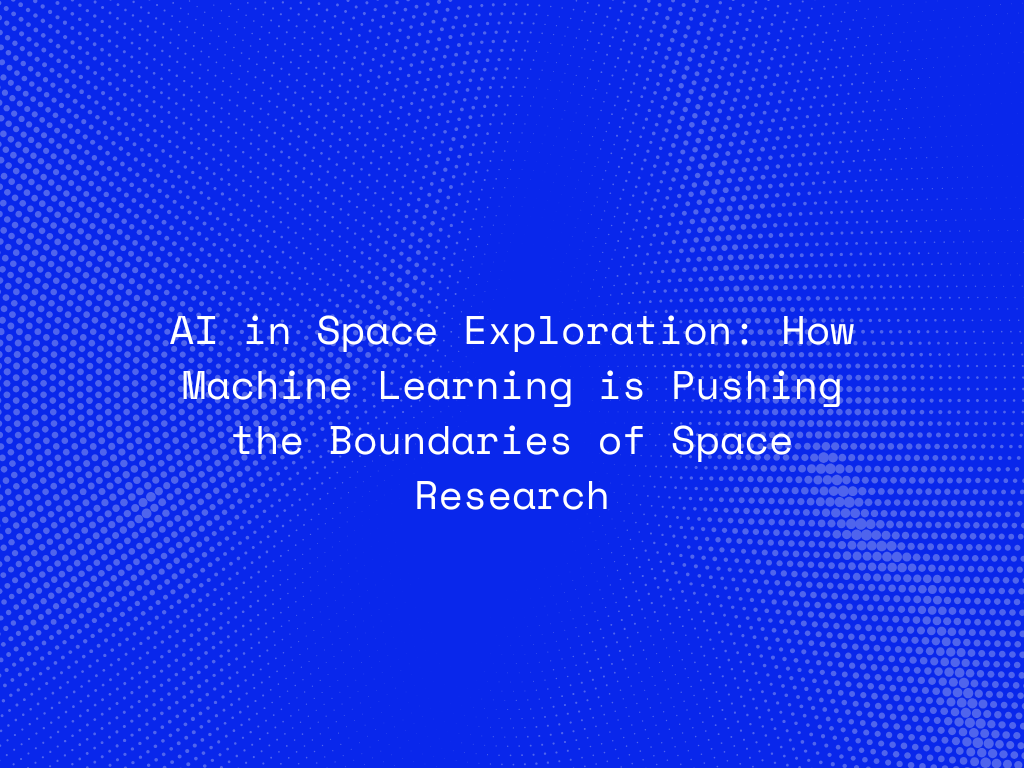Space exploration has always been at the forefront of human innovation, and now, with the integration of artificial intelligence (AI) and machine learning (ML), it is reaching new heights. From automating data analysis to enabling autonomous spacecraft, AI is revolutionizing how we explore the cosmos. This article delves into the role of machine learning in advancing space research and its potential to unlock the universe’s secrets.
Key Applications of Machine Learning in Space Exploration
Data Analysis from Space Telescopes:
- ML algorithms process massive datasets from telescopes like the Hubble and James Webb Space Telescope, identifying patterns, anomalies, and celestial bodies more efficiently than humans.
Planetary Exploration:
- AI-powered rovers, like NASA’s Perseverance, use machine learning to navigate Mars autonomously, analyze soil samples, and search for signs of life.
Satellite Operations:
- Machine learning optimizes satellite functions, such as predicting orbital decay, enhancing imaging capabilities, and managing power consumption.
Astronomical Event Detection:
- AI systems monitor and predict events like supernovae, asteroid movements, and gravitational waves, enabling timely responses and deeper understanding.
Exoplanet Discovery:
- ML algorithms analyze light curves from telescopes like Kepler and TESS, identifying dips that indicate the presence of exoplanets.
How AI Enhances Autonomous Space Missions
Real-Time Decision Making:
Autonomous spacecraft equipped with ML can adapt to unforeseen challenges, such as avoiding collisions with space debris or responding to environmental changes.Resource Optimization:
AI manages spacecraft resources like fuel and energy efficiently, extending mission lifespans.Autonomous Navigation:
AI enables spacecraft to chart their own paths, reducing reliance on ground control and improving mission flexibility.
Benefits of Machine Learning in Space Exploration
Accelerated Discoveries:
AI processes data at unprecedented speeds, uncovering insights that might take human scientists years to identify.Cost Efficiency:
By automating complex tasks, AI reduces the need for human intervention, lowering mission costs.Enhanced Precision:
Machine learning models improve the accuracy of predictions and analyses, minimizing errors in critical operations.
Challenges in Applying AI to Space Exploration
Data Reliability:
Space missions generate noisy and incomplete data, which can challenge the effectiveness of machine learning models.Computing Constraints:
Limited computational power in space-bound systems necessitates highly efficient algorithms.Model Validation:
Ensuring that AI models are reliable and fail-safe in the unpredictable environment of space is a critical concern.Ethical Considerations:
The increasing autonomy of AI systems raises ethical questions about decision-making in high-stakes scenarios.
Future of AI in Space Research
AI-Powered Space Observatories:
Next-generation observatories will leverage machine learning to analyze cosmic phenomena in real time.Interstellar Travel:
AI will play a pivotal role in managing long-duration missions, such as sending humans to Mars or exploring distant stars.AI and Quantum Computing:
Combining AI with quantum computing could revolutionize data processing, enabling simulations of cosmic events and deeper understanding of space-time.Terraforming and Colonization:
AI will assist in analyzing planetary environments, enabling the identification of habitable zones and the planning of colonization efforts.
Conclusion:
The integration of machine learning and AI into space exploration is opening doors to possibilities once thought impossible. As these technologies continue to evolve, they promise to enhance our understanding of the universe, optimize space missions, and even pave the way for humanity’s future among the stars. The sky is no longer the limit—it’s just the beginning.




